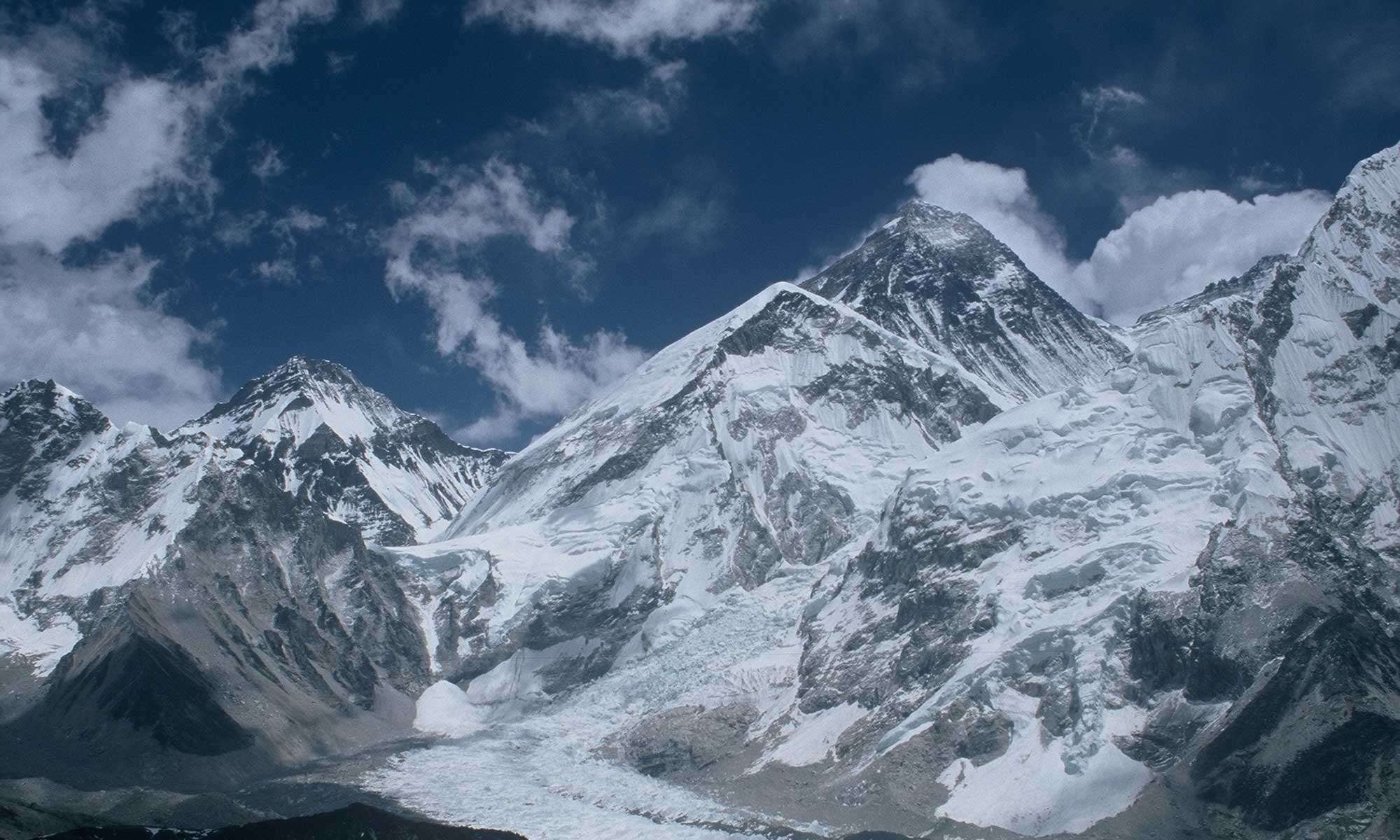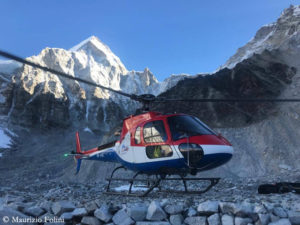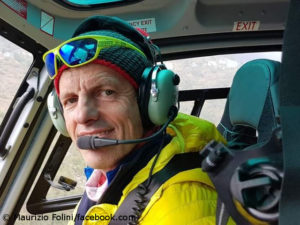On Mount Everest, the first commercial teams have left for summit attempts. Among those who set out were the mountaineers of Bahrain’s Royal Guard. If everything goes as planned, Sheikh Mohamed Hamad Mohamed Al Khalifa and Co. are expected to reach the 8,849-meter-high summit next Tuesday. Before that, the rope-fixing team led by Everest record holder Kami Rita Sherpa is to secure the route up to the highest point.
During their successful expedition on the eight-thousander Manaslu last fall, some climbers of the team from Bahrain had – as reported – quite obviously let themselves be flown by helicopter from base camp to Camp 1. I had called this “heli-doping”. Helicopters are being used more and more frequently on Nepal’s eight-thousanders – and by no means only, as in earlier days, for rescue flights.
After articulating my gut feelings about some of the developments on the eight-thousanders following the events in mid-April on the 8,091-meter-high Annapurna, Maurizio Folini commented on my article: “We need absolutely to introduce ethics using the helicopter in Nepal. I’m the first pilot flying above 7,000 meter for rescue, I’m also part of the game but it is time to stop the commercial fake rescue (many…) and start a professional Himalayan rescue organization.”
Since 2011, Folini has been flying regularly in the Himalayas. In 2013, the Italian achieved the highest helicopter rescue of all time on Mount Everest, when he carried a Nepalese climber down from 7,800 meters on a long line. I contacted the 55-year-old:
Maurizio, you are one of the pioneers of rescue helicopter flights in the Himalayas. In your experience, how widespread is “heli-doping” in the meantime, i.e. climbers being flown directly to the high camps or from there afterwards in order to save themselves dangerous or even just annoying stages?
It’s not very common yet. But we definitely need a regulation for it and, above all, controls. Even here in the Alps, the rescue helicopter is too often called for unnecessary flights. It is necessary to assess the situation seriously and professionally on a case-by-case basis.
Recently on Annapurna, supplies of bottled oxygen, gas and food were flown to the last high camp at above 7,000 meters during a summit attempt. Is this the future of commercial mountaineering?
They flew oxygen and material to 6,400 meters and not to 7,000 meters, but that makes no difference in terms of ethics.* We are talking about commercial mountaineering and companies that must and are allowed to ensure their existence. Here in the Alps, food is also transported by helicopter to the mountain huts. But the mountaineers who use bottled oxygen (that is their right and should not be criticized) should keep a portion of self-responsibility. Otherwise, they run the risk of consuming “too much” oxygen.
The other question is: Who transports bottled oxygen by helicopter? Only the rich expeditions? Or is it for everyone? Here, too, rules are needed, and sometimes a certain reason with a view to business. This also applies to us in the Alps and not only in the Himalayas.
What risk do pilots take with such actions?
Until a few years ago, landings at 5,500 meters were considered an absolute exception. Now we almost talk about normality when helicopters land at 6,500 meters and rescue climbers. The helicopters and the pilots are absolutely at the limit. It’s a question of exposure and time: the more often and the longer they are exposed to danger, the less of a coincidence it is when an accident occurs.
We are capable of making such flights, and we should. But we don’t need to expose ourselves for the unnecessary. Unfortunately, it is only a matter of time until an accident will happen at these high altitudes. Actually, we should discuss and act before, not after. But that won’t happen because human ego and business are at play. We need a new ethic for helicopter flights in the Himalayas and also in the Alps – but above all an ethic for humanity in general, for every day and everything we do.
* I referred to the statements of the expedition leaders of Seven Summit Treks and Imagine Nepal, Chhang Dawa Sherpa and Mingma Gyalje Sherpa, both of whom had stated that the material had been dropped near Camp 4. This camp was located at 7,300 meters.




